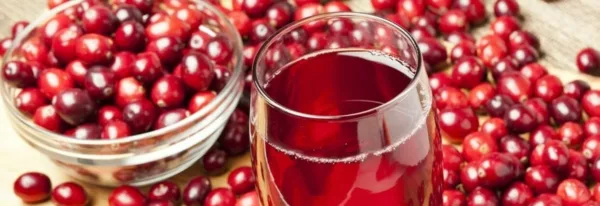An update: 2025 EAU Guidelines for nutraceuticals in recurrent UTIs
The 2025 edition of the EAU Guidelines on Urological Infections has introduced a comprehensively revised section on the management of acute and recurrent cystitis, with particular emphasis on non-antibiotic therapeutic strategies. In addition, the guidelines now incorporate newly developed sub-sections addressing disease prevention and long-term management approaches.
Non-antibiotic therapeutic modalties, such as cranberry juice for UTIs?
Non-antibiotic therapeutic modalities for cystitis have been evaluated extensively in recent years. Among these, the role of cranberry-derived products has received considerable attention. Clinical investigations have examined both cranberry juice preparations and encapsulated cranberry powder. The guideline recommendations concluded, however, that the currently available evidence remains insufficient to support cranberry products as an evidence-based therapeutic option for acute cystitis. This conclusion is partly attributable to wide variability in the concentration of proanthocyanidins (PACs) across the included trials, with reported content ranging from 7.5 mg to 224 mg. Such heterogeneity may have significantly influenced study outcomes, thereby limiting the ability to draw firm clinical recommendations.
The potential efficacy of D-mannose, evaluated either as monotherapy or in combination with cranberry, was also assessed. Like cranberry studies, a substantial degree of heterogeneity in the dosage regimens employed across clinical trials precludes the establishment of standardised treatment recommendations. Only one clinical study provided encouraging results, in which a phytotherapeutic complex containing D-mannose, citric acid, prebiotic fibres, Astragalus, and Taraxacum officinale (commonly referred to as the DAPAD complex) demonstrated superior rates of both clinical and microbiological cure compared with control arms.
Several phytotherapeutic formulations have likewise been subjected to clinical evaluation. An herbal preparation containing Centaurii herba, Levistici radix, and Rosmarini folium demonstrated non-inferiority to single-dose fosfomycin trometamol in women aged 18–70 years presenting with typical symptoms of acute uncomplicated cystitis. Furthermore, a randomised controlled trial investigated a combined regimen of L-methionine, Hibiscus sabdariffa, and Boswellia serratain comparison with conventional antibiotic therapy for women with recurrent cystitis experiencing acute symptomatic episodes. Both treatment arms were associated with improvements in patient-reported quality of life at one- and three-month follow-up. Notably, women receiving the phytotherapeutic combination exhibited a lower recurrence rate and a greater prevalence of asymptomatic bacteriuria, a state hypothesized to exert a protective effect against symptomatic infection. Consequently, phytotherapeutic regimens incorporating Centaurii herba, Levistici radix, Rosmarini folium, L-methionine, Hibiscus sabdariffa, and Boswellia serrata may represent promising alternatives to antibiotic therapy in the management of recurrent cystitis.
Additional evidence has emerged regarding therapeutic strategies employing xyloglucan, gelose, Hibiscus, and propolis. Data from multicentre randomised controlled trials demonstrated that this combination significantly reduced urinary urgency and incontinence compared with placebo, leading to symptomatic resolution in a substantial proportion of patients.
With respect to prophylaxis of recurrent cystitis, the guidelines reviewed multiple non-antibiotic interventions. Vaginal and/or oral administration of Lactobacillus spp. probiotics has been explored; however, current evidence remains insufficient to determine the optimal route of administration, appropriate dosage, or treatment duration. Similarly, while cranberry prophylaxis has been investigated extensively, further research is required to clarify the most effective formulation, concentration of active compounds, and duration of use. Although D-mannose is frequently combined with cranberry in prophylactic regimens, a recent clinical trial demonstrated that daily D-mannose supplementation did not significantly reduce the incidence of recurrent episodes of clinically suspected cystitis in women treated in primary care settings.
By contrast, the combination of xyloglucan, Hibiscus, and propolis appears to exert a barrier effect by preventing the adhesion of uropathogenic Escherichia coli to the uroepithelial surface. A systematic review and meta-analysis including 178 patients confirmed the effectiveness of this formulation in reducing the risk of recurrent cystitis relative to placebo. Moreover, this intervention was associated with high levels of patient adherence and a concomitant reduction in the overall use of antibiotics.
Conclusion on nutraceuticals for recurrent UTIs
The 2025 EAU Guidelines reflect a paradigm shift in the management of cystitis, underscoring the increasing relevance of non-antibiotic therapeutic and prophylactic strategies. While certain phytotherapeutic and nutraceutical agents show considerable promise, the heterogeneity of available clinical data underscores the urgent need for further high-quality, standardised randomised controlled trials before robust clinical recommendations can be made.
Reference
- EAU Guidelines on Urological Infections. Bonkat G, Kranz J, Cai T, Geerlings SE, Köves B, Pilatz A, Medina-Polo J, Schneidewind L, Schubert S, Veeratterapillay R, Wagenlehner F, Bausch K, Devlies W, Leitner L, Mantica G, Stangl FP, Ali H. EAU Guidelines. Edn. presented at the EAU Annual Congress Madrid, Spain 2025. ISBN 978-94-92671-29-5 http://uroweb.org/guidelines/compilations-of-all-guidelines
